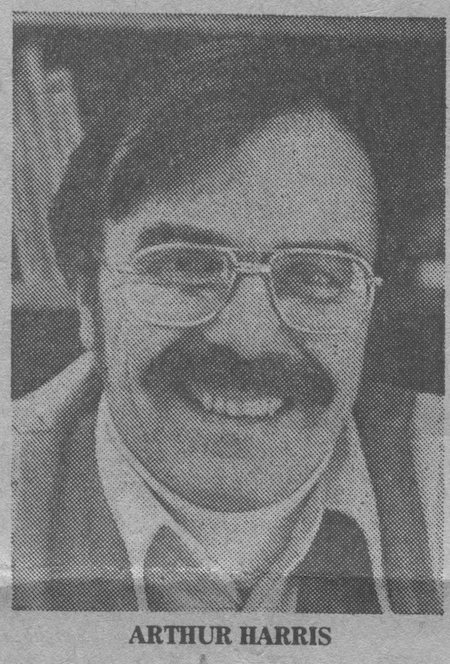

Ypsilanti — "Ypsilanti has ignored, and worse, misused its 'built environment' almost too long — but it's not too late," says Arthur 'Jack' Harris, associate professor of English at Eastern and one of the primary movers and shakers in the battle to save Ypsilanti's rich architectural heritage.
Harris, a native of Chicago who grew up in the Traverse City region, is specific when he discusses his role in the fight to preserve Ypsilanti landmarks.
"I see my role as one of advocate — not to save every old building, that's impossible — but advocate for intelligent decision-making about what is saved and what should go. We all need to be better informed — economics is the key — but sometimes we are told things by the uninformed. We need the facts about costs, about heat loss and about sources of funding for historic buildings," Harris explains.
WITH A GRANT from the Michigan Council for the Humanities, Harris will seek to promulgate his belief that Ypsilanti landmarks are indeed worth saving and will conduct a project entitled "Five Historical-Architectural Visual Landmarks of Ypsilanti" which focuses on historic buildings in Ypsilanti. He said academic humanists will lead the community in discussions designed to arouse public interest in the buildings' histories, present conditions and possibilities for the future.
When the project is completed in May, the program will have covered Ypsilanti's Artrain Building, Stacklewitz House, Gilbert House, old City Hall and the Glover House.
"The grant began with an application through Eastern's Office of Research Development to do a photographic study of the historic architecture of Ypsilanti. History is not just what men and women have done with pen or the gun, but with their hands — and Ypsilanti is particularly rich in visual images of 19th century American workmanship," Harris said.
Ypsilanti's City Council recently approved the establishment of an historic district, including the areas east of campus, Riverside Park, Depot Town, the police station and downtown.
THE ORDINANCE was passed with the idea of safeguarding the heritage of the district, stabilizing and improving property value, promoting the use of the district for education, pleasure, and the welfare of residents of the city, and encouraging new buildings and development in line with current architectural design.
Harris and the proponents of historical preservation were encouraged by the recent council action.
"If you had been at the city council meetings when the historic district ordinance was discussed and passed, you would have seen how far Ypsilanti has come in progressive thinking ... The mayor, the city manager, the city attorney and members of the council all revealed themselves as people of tremendous foresight. It was exciting to see their awareness and their positive thinking about Ypsilanti's future."
"There are some people who think that Ypsilanti is the end of the earth — well it isn't. In the past, Ypsilanti has been like a poor old woman who kept telling herself that she was poor. But she had in her possession a vast number of boxes that she thought were worthless — they turn out to be infinitely rich."
"THIS POOR OLD Lady is waking up," Harris adamantly states.
Harris lives in a house built in 1869 and formerly owned by Ada Norton, a former teacher at Michigan State Normal College. Harris earned his doctorate degree at the Shakespeare Institute of the University of Birmingham England. He credits his four-year stay in England with providing him the awareness of the value in serving historical things. "My passion is to save the historic-roots in Ypsilanti — if we lose it here, there will be nothing but total fakery," he warns.
The five buildings included in Harris' project will be studied because of their identity with the Ypsilanti community.
The Stacklewitz House, a building in the campus area, is the only building left in the Ypsilanti-Ann Arbor area with an onion-shaped dome. Although still owned privately, the building is slated for demolition by the University.
ANOTHER OF Harris's favorite structures is the old City Hall. "It is an example of Second Empire architecture with a Mansard roof," Harris explains. "They are trying to imitate the Mansard roof along Washtenaw Ave. — but it's a cheap imitation."
Harris and the proponents of historical preservation were encouraged by the recent council action.
"Unlike the history of Ann Arbor, Ypsilanti was a much more homogeneous community — it had mixed origins. Like many other towns and cities, Ypsilanti needs to reconsider its center. It needs a sense of community and community pride. These needs are particularly evident when one recognizes what is happening in the surrounding townships which have no 'centers' but where population is burgeoning and housing developments are going up . . . Here much can be done which is more solid than the random and rather phony gestures at identity represented in the gas lights and wagon wheels of the new housing developments."
"We need to see what we have and the potential of what we have, before it's too late, before it's lost," Harris says.